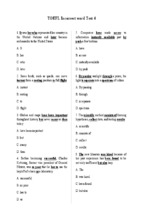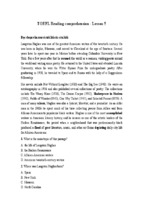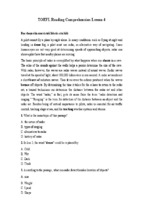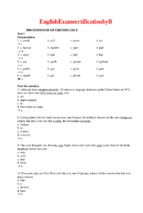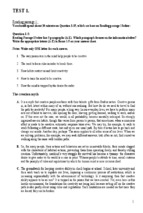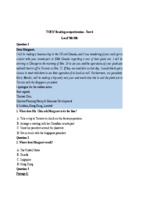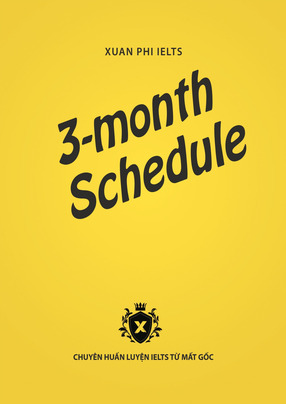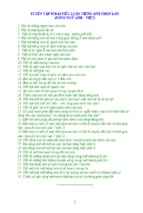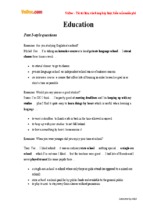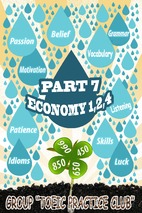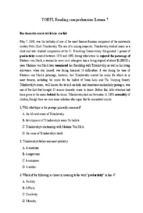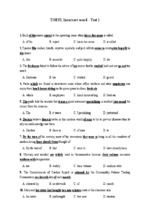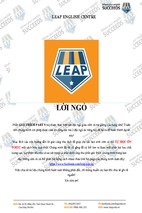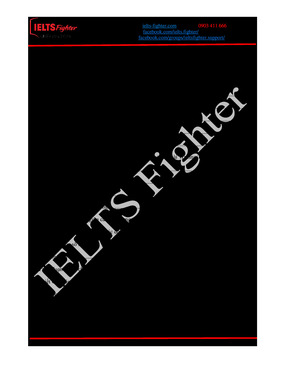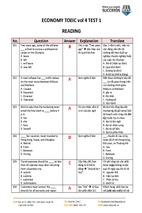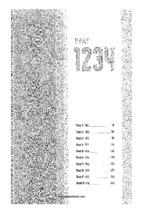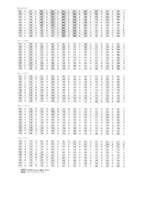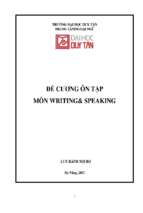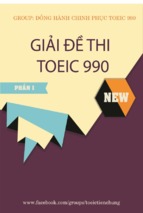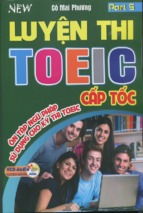501
Critical Reading Questions
501
Critical Reading
Questions
®
N E W YO R K
Copyright © 2004 LearningExpress, LLC.
All rights reserved under International and Pan-American Copyright Conventions.
Published in the United States by LearningExpress, LLC, New York.
Library of Congress Cataloging-in-Publication Data:
501 critical reading questions.—1st ed.
p. cm.
ISBN 1-57685-510-4 (pbk. : alk. paper)
1. Reading (Secondary)—Examinations, questions, etc. 2. Reading comprehension—
Examinations, questions, etc. 3. Readers (Secondary) I. Title: Five hundred one
critical reading questions. II. Title: Five hundred and one critical reading questions.
III. LearningExpress (Organization)
LB1632.A16 2004
428.4'07'12—dc22
2004001114
Printed in the United States of America
9 8 7 6 5 4 3 2 1
First Edition
ISBN 1-57685-510-4
For more information or to place an order, contact LearningExpress at:
55 Broadway
8th Floor
New York, NY 10006
Or visit us at:
www.learnatest.com
The LearningExpress Skill Builder in Focus Writing Team is
comprised of experts in test preparation, as well as educators and
teachers who specialize in language arts.
LearningExpress Skill Builder in Focus Writing Team
Marco A. Annunziata
Freelance Writer
New York, New York
Elizabeth Chesla
English Instructor
Language Arts Expert
Harleysville, Pennsylvania
Brigit Dermott
Freelance Writer
English Tutor, New York Cares
New York, New York
Margaret Muirhead
Freelance Writer
Arlington, Massachusetts
Patricia Mulrane
Freelance Writer
New York, New York
Lauren Starkey
Freelance Reference Writer
Essex, Vermont
C Reed
Test Preparation Expert
Burbank, California
Contents
Introduction
ix
1
Popular Culture
1
2
U.S. History and Politics
27
3
Arts and Humanities
59
4
Health and Medicine
87
5
Literature and Literary Criticism
121
6
Music
155
7
Science and Nature
181
8
Sports and Leisure
211
9
Social Studies
245
Source Materials
267
vii
Introduction
Why Should I Use this Book?
Schools and employers know that students and workers who reason critically about what they read are better students and more valuable employees. That is why standardized tests almost invariably include a reading
comprehension section.
This book is designed to help you be a more successful critical reader.
You are probably most interested in performing well on a standardized test
such as the SAT, ACT, or a vocational or professional exam. By reading and
working through 501 Critical Reading Questions you will become much more
proficient at answering the multiple-choice questions found on those tests.
The benefits you gain from this practice and from your conscious attention
to critical reasoning skills will extend far beyond any exam and into all
aspects of your life. Reading will become a much more rewarding and
enjoyable experience, and your life will be richer for it.
What Is in this Book?
Each of the chapters in this book focuses on a different subject matter, so
regardless of the exact exam you need to prepare for, there will be content
similar to material you will face on your exam. However, it’s important that
ix
501 Critical Reading Questions
you practice with all the passages, not just the ones in your areas of interest. Sometimes unfamiliar subjects can teach you the most valuable lessons
about critical reading.
Each chapter contains three short reading passages, similar to the ones
found on many exams, including the SAT. There are also six longer passages, two of which are paired for purposes of comparison.
Passages in Chapter One deal with popular culture and current events.
History and politics are covered in Chapter Two. Chapter Three’s passages
focus on the humanities—they are drawn from fields such as mythology,
philosophy, and the arts. Chapter Four has passages that deal with health
and medicine. Chapter Five draws passages from literature. Chapter Six’s
passages are drawn from the field of music. Chapter Seven contains material on science and nature. Chapter Eight covers sports and leisure. And
finally, Chapter Nine’s passages are based in the social sciences of anthropology and sociology.
STAY ACTIVE
The most important thing to know about critical reading is that it is an active
endeavor. Keep your mind active and on its figurative toes at all times. Underline important points as you read, argue with the author, make notes, and do
whatever you need to stay involved with the passage.
Seven Strategies for Success
Even though short passages are new to the SAT, strategies for successfully
answering the questions are identical to those for the longer passages. The
first thing you will want to do, before diving into the practice, is to make
sure you are thoroughly familiar with these strategies. Then feel free to
adapt them to suit your needs and preferences. One word of caution,
though: Be sure you actually try each strategy several times before deciding whether or not it suits you!
1. Get involved with the passage. Critical reading is an active endeavor,
not a passive one. React to the material, form questions as you
read, and make your own marks on the paper. Write in the
margins, underline important words and sentences—talk back!
x
501 Critical Reading Questions
2. Try looking at the questions (but not the answers) before you read the
passage. Make sure you understand what each question is asking.
What are the key words in the questions? Are there phrases you
can look for in the passage? If so, underline them or jot them in
the margin so that you can look for them in the passage. Then,
when you find them, you can either answer the question right away
or mark the area to return to later.
3. After reading the passage, return to the questions and try to answer each
one in your own words before you look at your answer choices. The
reason for this is that the answers will contain distracter choices.
These are choices that are logically plausible but not correct, that
contain words and phrases found in the passage but are not
correct, or that are close to correct but wrong in some detail. If
you can formulate your own answer before looking at your choices,
you are less likely to be lured by an incorrect answer choice.
4. As with all multiple-choice questions, elimination is an important
strategy when you aren’t sure of the answer. Usually you can narrow
down your choices to two or three without too much effort. When
you eliminate an incorrect choice, it’s important to actually cross it
out in your test booklet so that you aren’t distracted by it again as
you focus on the remaining possibilities.
5. Refer back to the passage(s) on virtually every question. Even if you
think you know the answer to a question without looking at the
passage, look anyway, just to confirm your answer and to make
sure you haven’t fallen for a clever distracter.
6. When you encounter a two-passage section, read the passages with their
relationship in mind. Are they opposed or in agreement? If there is
some other type of relationship, how would you describe it? If the
passages have opposing viewpoints, what are the points of
difference? You may want to make notes about these things in the
margin.
7. Don’t be afraid to skip around among the questions, or among the
passages within a section. This is an especially important strategy if
you know from past experience that you often run out of time on
standardized tests. If this is the case, and you encounter a passage
you’re having difficulty with, go on to the next one and come back
to the difficult one later, as time allows.
xi
501 Critical Reading Questions
Remind Me Why I’m Doing This
Finally, as you work through these 501 questions, think of it as time spent
doing something for yourself. It is extremely important for you to improve
your critical reading skills, not only for standardized tests, but also for your
success throughout life. And, besides, there is some pretty interesting stuff
in this book! Enjoy.
xii
501
Critical Reading Questions
1
Popular Culture
Questions 1–3 are based on the following passage.
The following selection is about the invention of the compact disc, and
explains how it works.
(1)
(5)
(10)
(15)
Compact discs (CDs), which may be found in over 25 million American homes, not to mention backpacks and automobiles, first entered
popular culture in the 1980s. But their history goes back to the 1960s,
when an inventor named James Russell decided to create an alternative to his scratched and warped phonograph records—a system that
could record, store, and replay music without ever wearing out.
The result was the compact disc (CD). Made from 1.2 mm of polycarbonate plastic, the disc is coated with a much thinner aluminum
layer that is then protected with a film of lacquer. The lacquer layer
can be printed with a label. CDs are typically 120 mm in diameter, and
can store about 74 minutes of music. There are also discs that can
store 80, 90, 99, and 100 minutes of music, but they are not as compatible with various stereos and computers as the 74–minute size.
The information on a standard CD is contained on the polycarbonate layer, as a single spiral track of pits, starting at the inside of the
disk and circling its way to the outside. This information is read by
shining light from a 780 nm wavelength semiconductor laser through
the bottom of the polycarbonate layer. The light from the laser follows
1
501 Critical Reading Questions
(20)
(25)
(30)
the spiral track of pits, and is then reflected off either the pit or the aluminum layer. Because the CD is read through the bottom of the disc,
each pit looks like a bump to the laser.
Information is read as the laser moves over the bumps (where no
light will be reflected) and the areas that have no bumps, also known
as land (where the laser light will be reflected off the aluminum). The
changes in reflectivity are interpreted by a part of the compact disc
player known as the detector. It is the job of the detector to convert
the information collected by the laser into the music that was originally recorded onto the disc. This invention brought 22 patents to
James Russell, who today says he working on an even better system for
recording and playing back music.
1. According to the passage, why did James Russell invent the CD?
a. He was tired of turning over his records to hear both sides.
b. He wanted to record more music on a new format.
c. He wanted a purer, more durable sound than he could get from
vinyl records.
d. He was interested in getting patents.
e. He wanted to work with lasers.
2. What would happen if the detector on a CD player
malfunctioned?
a. The spiral track would not be read properly.
b. The pits and land would look like one unit.
c. The changes in reflectivity would be absorbed back into the
laser.
d. The music would play backwards.
e. The information read by the laser would not be converted into
music.
3. Paragraph 3, lines 14–21, explains all of the following EXCEPT
a.
b.
c.
d.
e.
how the information on a CD is read.
why semiconductor lasers were invented.
where information is stored on a CD.
what pits and bumps are.
the purpose of the aluminum layer of a CD.
2
501 Critical Reading Questions
Questions 4–6 are based on the following passage.
The selection that follows is about the current state of the modeling industry.
(1)
(5)
(10)
(15)
(20)
(25)
(30)
The beginning of the twenty-first century has been called the end of the
supermodel era by fashion magazines, trend watchers, and news organizations around the world. The models are being replaced, so the theory goes, with actors. Check the covers of fashion magazines, and you
will find that many on any given month feature an actor, rather than a
model. But, as with most trends, this is nothing new.
From its beginnings in the 1920s, the modeling industry has provided beautiful people to help sell everything from magazines to computers to vacation destinations. John Robert Powers, who opened the
first modeling agency in 1923, was a former actor who hired his actor
friends to model for magazine advertisements. Cary Grant, Lucille
Ball, and Princess Grace of Monaco were clients. However, for many
models simply being “great-looking” was where their resumés began
and ended. The height of popularity for them was in the 1980s and
1990s, the era of the supermodel. A handful of “perfect” women commanded salaries of up to $25,000 a day to walk catwalks at fashion
shows, appear in print ads, and pose their way through commercials.
They were celebrities, treated with all of the lavish attention usually
paid to heads of state or rock stars.
But that was in the supermodel heyday. As designers and magazine
editors began to favor more exotic and more “real” looking models,
the modeling handful grew into an army. The demand for the perfectlooking select few dropped, and women who had quirky smiles, a few
extra pounds, spiky hair, or were past their twenties, gained favor. This
group was joined by those who achieved success in some other venue,
such as music (think Renee Fleming raving about a watch), sports
(Tiger Woods happily devouring his Wheaties®), and acting (Danny
Glover waxing rhapsodic over MCI). Iconic fashion designer Calvin
Klein summed it up: “I don’t think that people are that interested in
models anymore. It’s not a great moment for the modeling industry.
It says a lot about our society and I think it’s good.”
4. According to the passage, the author believes that
a. today’s fashion models are not as perfect looking as were the
supermodels.
b. people still respond to perfection in advertising.
c. today’s fashion models are thinner than those in the past.
d. to be a model, one must be taller than average.
e. in the 1980s, models were paid more than they are today.
3
501 Critical Reading Questions
5. The phrase in lines 13 and 14, “great-looking” was where their
resumes began and ended, is
a. a description of the models’ work experience.
b. meant to be taken literally.
c. meant to be taken figuratively.
d. a truthful statement.
e. an example of pathos.
6. Waxing rhapsodic (line 28) most nearly means
a.
b.
c.
d.
e.
orchestrating a positive statement.
becoming musical.
burning a candle for.
making overtures.
becoming enthusiastic.
Questions 7–9 are based on the following passage.
This selection introduces the Computer Museum of America, and details an
important item in its collection.
(1)
(5)
(10)
(15)
Wondering what to do with that old Atari Home Video Game in the
attic? It’s on the wish list of the Computer Museum of America, in San
Diego, California, which hopes you will donate it to their holdings.
The Museum was founded in 1983 to amass and preserve historic
computer equipment such as calculators, card punches, and typewriters, and now owns one of the world’s largest collections. In addition,
it has archives of computer-related magazines, manuals, and books
that are available to students, authors, researchers, and others for historical research.
One item currently on display is a 1920s comptometer, advertised
as “The Machine Gun of the Office.” The comptometer was first
sneered at by accountants and bookkeepers, many of whom could add
four columns of numbers in their heads. The new machine was the
first that could do the work faster than humans. The comptometer
gained a large following, and its operation became a formal profession
that required serious training. But by the 1970s, computers took over,
and comptometers, and the job of operating them, became obsolete.
4
501 Critical Reading Questions
7. All of the following are probably part of the collection of the
Computer Museum of America EXCEPT
a. adding machines.
b. old computers.
c. operation manuals for calculators.
d. card punch machines.
e. kitchen scales.
8. In line 12, the author used the words sneered at to show
a.
b.
c.
d.
e.
a negative image of accountants.
what accountants and bookkeepers looked like.
the negative reaction to the comptometer.
the precursor of the comptometer operator.
how fast accountants and bookkeepers could add.
9. What term paper topic could probably be researched at the
Computer Museum of America?
a. Alexander Graham Bell’s contributions to American society
b. IBM’s contribution to the development of the modern
computer
c. more than just paintings: the museums of California
d. the rise and fall of the comptometer operator
e. why video games are harmful to our nation’s youth
Questions 10–17 are based on the following passage.
The following selection explains the origins and development of the modern
shopping mall.
(1)
(5)
(10)
Today’s shopping mall has as its antecedents historical marketplaces,
such as Greek agoras, European piazzas, and Asian bazaars. The purpose of these sites, as with the shopping mall, is both economic and
social. People go not only to buy and sell wares, but also to be seen,
catch up on news, and be part of the human drama. Both the marketplace and its descendant the mall might also contain restaurants,
banks, theaters, and professional offices.
The mall is also the product of the creation of suburbs. Although
villages outside of cities have existed since antiquity, it was the technological and transportation advances of the 19th century that gave
rise to a conscious exodus of the population away from crowded,
industrialized cities toward quieter, more rural towns. Since the suburbs typically have no centralized marketplace, shopping centers or
5
501 Critical Reading Questions
(15)
(20)
(25)
(30)
(35)
(40)
(45)
(50)
(55)
malls were designed to fill the needs of the changing community, providing retail stores and services to an increasing suburban population.
The shopping mall differs from its ancient counterparts in a number of important ways. While piazzas and bazaars were open-air venues, the modern mall is usually enclosed. Since the suburbs are spread
out geographically, shoppers drive to the mall, which means that parking areas must be an integral part of a mall’s design. Ancient marketplaces were often set up in public spaces, but shopping malls are
designed, built, and maintained by a separate management firm as a
unit. The first shopping mall was built by J. C. Nichols in 1922 near
Kansas City, Missouri. The Country Club Plaza was designed to be an
automobile-centered plaza, as its patrons drove their own cars to it,
rather than take mass transportation as was often the case for city
shoppers. It was constructed according to a unified plan, rather than
as a random group of stores. Nichols’ company owned and operated
the mall, leasing space to a variety of tenants.
The first enclosed mall was the Galleria Vittoria Emanuele in Milan,
Italy in 1865–77. Inspired by its design, Victor Gruen took the shopping
and dining experience of the Galleria to a new level when he created the
Southdale Center Mall in 1956. Located in a suburb of Minneapolis, it
was intended to be a substitute for the traditional city center. The 95acre, two-level structure had a constant climate-controlled temperature
of 72 degrees, and included shops, restaurants, a school, a post office,
and a skating rink. Works of art, decorative lighting, fountains, tropical
plants, and flowers were placed throughout the mall. Southdale afforded
people the opportunity to experience the pleasures of urban life while
protected from the harsh Minnesota weather.
In the 1980s, giant megamalls were developed. While Canada has
had the distinction of being home to the largest of the megamalls for
over twenty years, that honor will soon go to Dubai, where the Mall
of Arabia is being completed at a cost of over five billion U.S. dollars.
The 5.3 million square foot West Edmonton Mall in Alberta, Canada,
opened in 1981, with over 800 stores, 110 eating establishments, a
hotel, an amusement park, a miniature-golf course, a church, a zoo,
and a 438-foot-long lake. Often referred to as the “eighth wonder of
the world,” the West Edmonton Mall is the number-one tourist
attraction in the area, and will soon be expanded to include more retail
space, including a facility for sports, trade shows, and conventions.
The largest enclosed megamall in the United States is Bloomington, Minneapolis’s Mall of America, which employs over 12,000 people. It has over five hundred retail stores, an amusement park which
includes an indoor roller coaster, a walk-through aquarium, a college,
6
- Xem thêm -

